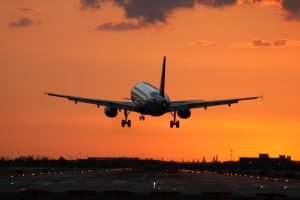If you want to navigate the increasingly complicated airfare maze, here are four things you need to know.
Giant Airlines Are Going Head-to-Toe with Ultra-Low-Fare Airlines
By now you've seen plenty of stories covering the move by American and United to introduce new "basic" economy fares—fares that are completely nonrefundable, include neither a checked bag nor even a carry-on bag too large to fit under a seat, provide seat assignment only at check-in time, give lowest boarding priority, and provide only limited frequent flyer benefits. The idea is to offer fares that are competitive with Allegiant, Frontier, and Spirit. Base fares will roll out during the year, even on routes where the giants do not compete directly.
American and United are copying Delta, which originated the idea last year. The main difference is that Delta still allows a carry-on bag for the overhead compartment. That inequality probably won't last long: Either Delta will adopt the "underseat" size cap on carry-on or American and United will drop it.
The take-away: The conditions on those basic fares are so onerous that most people will pay more for a "standard" ticket—which is just what the giant airlines want you to do.
ANALYSIS: United's New Bare-Bones Class Makes Economy Look Good
The Ultras Are Going Head-to-Toe with the Giants
Allegiant built its business on flying from nowhere to somewhere, thus avoiding direct competition with the giant airlines. But it has run out of nowheres, and so it's expanding into markets where it challenges the giants. And Frontier and Spirit don't hesitate to move in on any giant line's routes.
The take-away: Regardless of ticket conditions, the giants' hard product—seating and inflight entertainment—will remain at least a little bit superior to the ultras' hard product. The resulting race to the bottom should produce some attractive promotional deals.
American, Delta, and United Will Finally Roll Out a True Premium Economy
If today's astronomical business class fares give you sticker shock, you'll be able to buy a comfortable seat for a lot less on transatlantic and transpacific flights on American, Delta, and United. True premium economy, with lots of extra legroom, wider seats, and upgraded cabin service, is about what business class was a couple of decades ago. And the U.S. big three will finally be able to match what most of their intercontinental partners have been doing for years. But don't hurry: The roll-out will be gradual, starting with the newest planes.
True premium economy is practical only on wide-body (or two-aisle) planes. That means you'll see it domestically only on those rare domestic flights airlines operate with "international" planes. Domestically, your only "comfort" option is the few extra inches of legroom you get in "stretch economy," available on Alaska, American, Delta, Frontier, Hawaiian, JetBlue, and United. The big question here is whether Southwest will copy.
The take-away: You won't have to pay an astronomical business class price for a comfortable intercontinental flight on American, Delta, and United. Instead, you will soon have a premium economy option that's merely exorbitant, at around 80 percent more than regular economy.
RELATED: Southwest Says 'No' to Basic Economy
New Low-Fare Action Will Be Imports
All of the year's new low-fare service will be on intercontinental routes flown by foreign airlines. Norwegian is planning new low-fare flights from Ireland and Barcelona to various U.S. points; WOW is expanding its U.S. reach, and EasyJet and Ryanair will have at least the capability, if not the intention, of reaching eastern U.S. cities from Ireland and the U.K. with their longer-range 737s and A321s.
Currently, the U.S. giants seem to be more steamed at the Gulf carriers' token European flights than by the onslaught of low-fare competition. That's because they really don't want to lose lucrative business travelers to those lines, with their superior business class and first class service. The U.S. lines figure they can fight the low-fare battle by cutting fares on their regular economy class, maybe with an international basic option. But you can expect them to keep fighting the foreign low-fare lines' authorizations, too.
RELATED: Norwegian Air Is Quietly Dominating the Transatlantic Airfare Market
Meanwhile, Air Asia X, based in Kuala Lumpur, just announced its intention to start low-fare transpacific flights to the U.S. For now, its planes have enough range to reach Hawaii but not the mainland, and nobody is worrying about the minuscule Honolulu-Kuala Lumpur market. But that could change, either when Air Asia X takes deliveries of its A350s that have enough range to reach the mainland from Malaysia, or even sooner if it can negotiate "fifth freedom" routes to fly by way of Hong Kong, Tokyo, Taipei, or some other major Asian destination, and pick up traffic there.
The take-away: Don't look for any big new U.S. start-up low-fare lines. Instead, look for the ways the existing giant lines react to the new competition—either by attractive fares or by pressuring the U.S. government to limit the foreign competition. And more than ever, keep watching Airfarewatchdog and other online sources for short-term "sale" fare anywhere you want to go.
More from SmarterTravel:
- 7 New Routes That Promise Cheap Flights
- What to Do When an Airline Tries to Screw You
- 10 Best and Worst Airports in America (2016 Edition)
Consumer advocate Ed Perkins has been writing about travel for more than three decades. The founding editor of the Consumer Reports Travel Letter, he continues to inform travelers and fight consumer abuses every day at SmarterTravel.






